In northern Maoxian (茂县), there is a town and a lake in the mountains, both named Diexi (叠溪). If you peer deeply into the turquoise surface of Diexi Lake, you won’t see much. It’s too colorful and opaque. But be aware, there is an old town beneath that surface.
This “lake” was actually formed less than a hundred years ago. In 1933, a horrible sequence of events precipitated by a major earthquake in Sichuan (四川), with its epicenter being Diexi, would destroy the bustling town of Diexi and induce landslides all around. These landslides occurred around the Minjiang (岷江 or Min River), causing both dam blockages and flood bursts. Likely, the earthquake and landslides completely buried the town initially, and then water from the Minjiang eventually submerged whatever remains were left. Due to geographic changes, that water has remained. Many surrounding villages and landforms were also completely destroyed by the event.
From what I can gather, the old Diexi was a strategically located merchant town (and possibly a military outpost even further back) with ancient roots dating back to the Han dynasty (202 BC – 220 AD). At the time of the earthquake, the town probably had a population of almost 10,000. Nearly all of the town’s inhabitants (which I surmise were majority Qiāngzú) would have been tragically killed during the disaster. An actual rumor I heard was that one single survivor made it out.
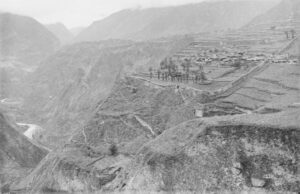
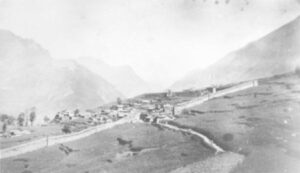
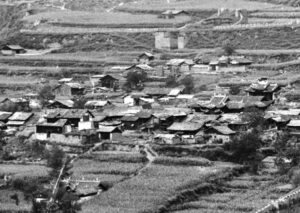
Getting to Diexi is like a typical journey in the Maoxian mountains. You will need a ride through the mountain highway with some long tunnels on the way. The mountains all blend together because there are so many, but if you learn to look closely you will spot the small signs of past life among them, like a tiny shrine, an abandoned shack, the lonely home on a sharp cliff, or a curious door or hole. Many mountains here will have falling rock nets to keep rocks from hitting the road (which is already narrow for most of the way). Some villages with basic attractions along the way too, if one is curious.
Even discounting the hazards of driving here, navigating is very far from boring.
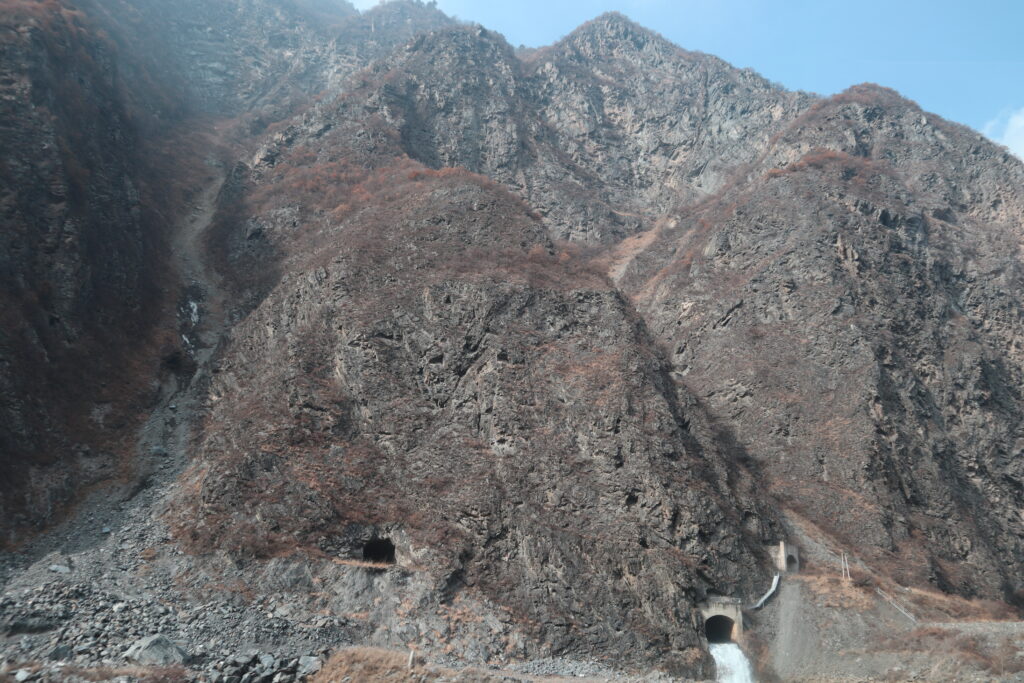

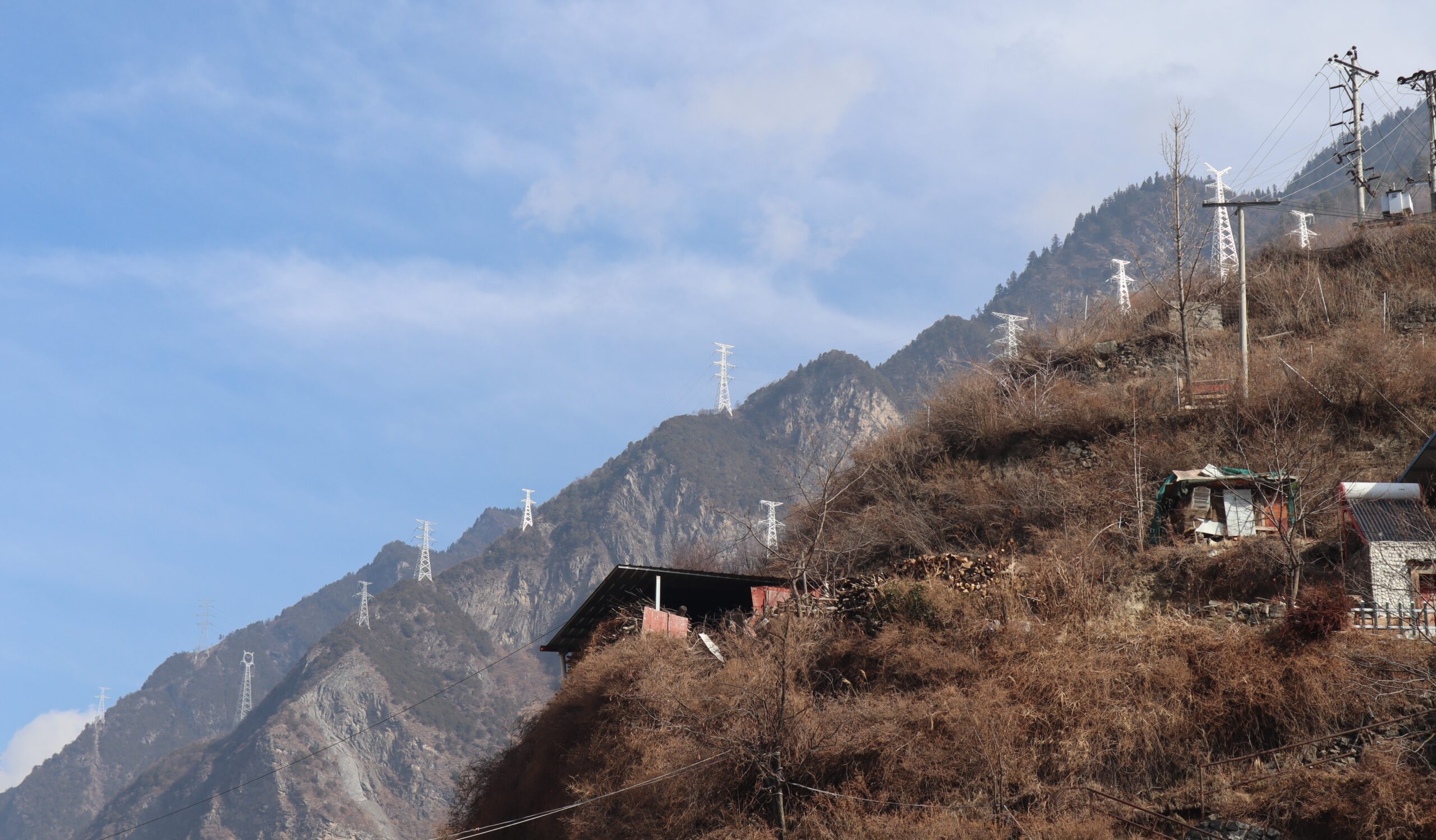
The first part of Diexi Lake is more like a roadside attraction. It has a great view certainly, but only requires parking the car (or tour bus) and getting out onto a viewing platform. There might even be Yaks you can sit on, for a few RMB. All of this is in the same spot. There also is a small village around the area. Overall, this section is a very brief, typical tourist experience.
Still, the platform offers an intriguing combination view of the lake, surrounding mountains, and a pretty valley. Gazing into the water does not reveal any hidden ruins though, but it may be possible near water level to see something – but I was unable to get close; it looked like there were some boats that could take visitors onto the lake maybe, but they were not available at the time (or season). The mountains and the valley must look stunning during Spring or Summer.
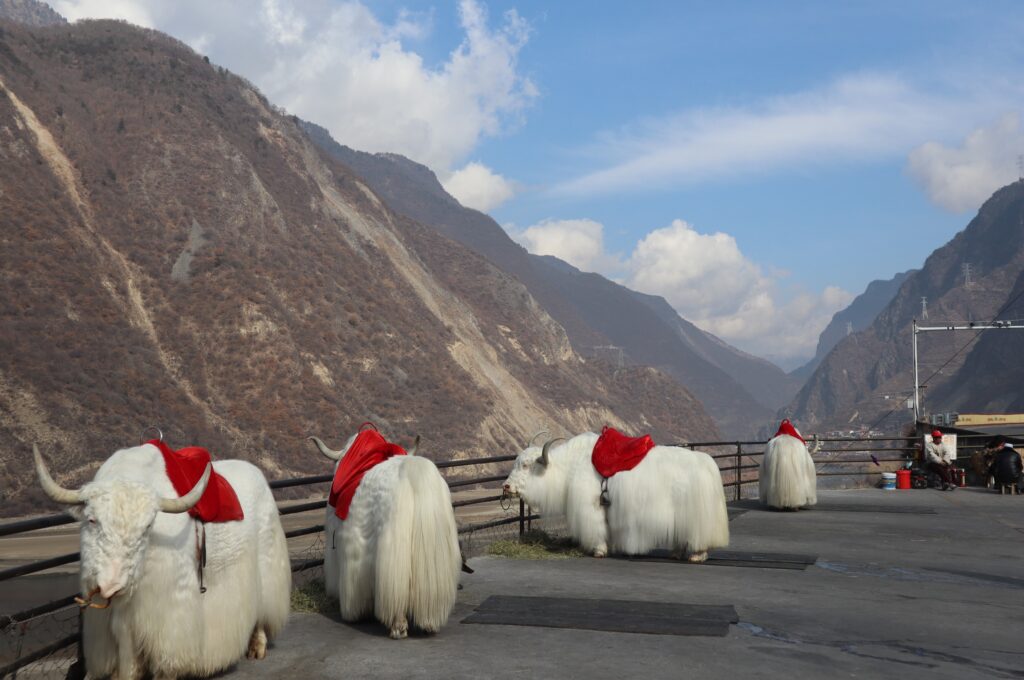
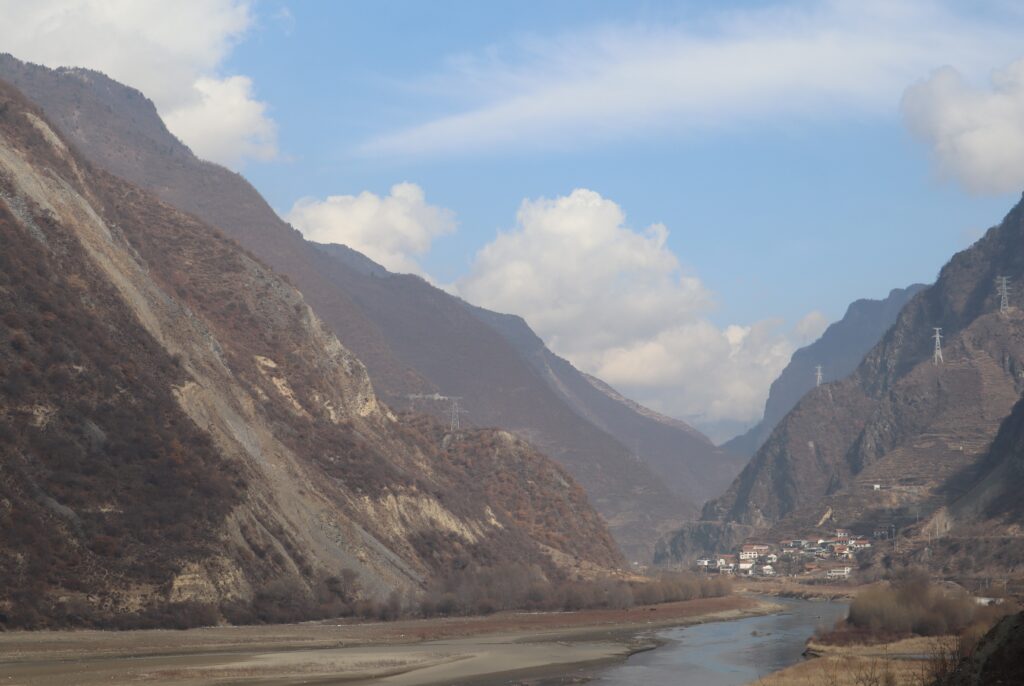
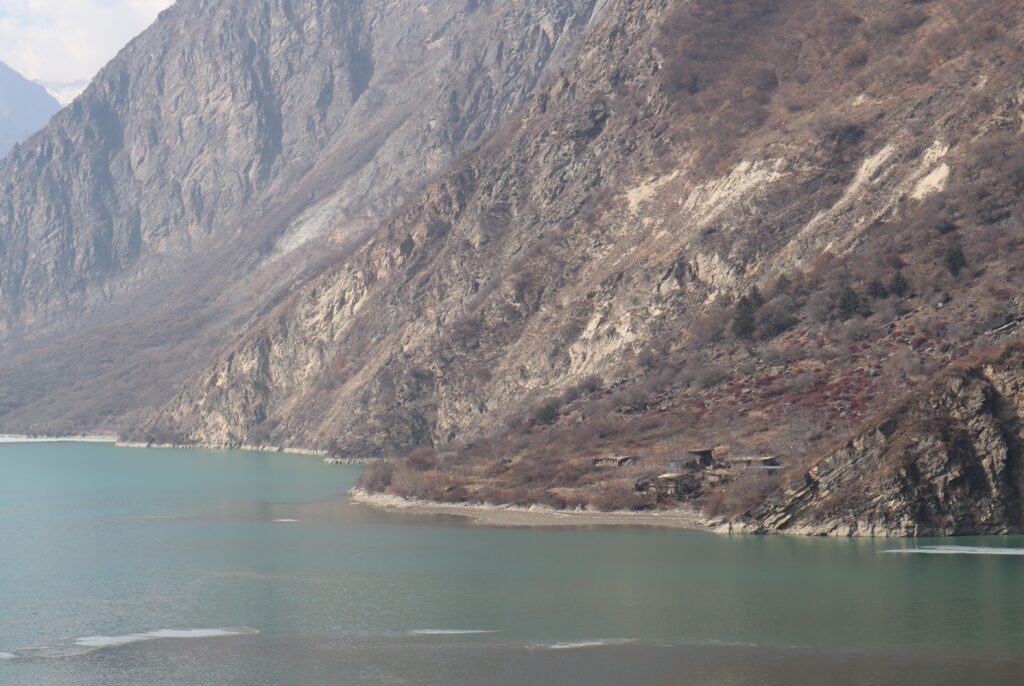

But there is a more riveting way to see Diexi. Head over to the upper town itself – it lies somewhat high above and getting there involves driving through upward winding roads.
Arriving to town it is immediately clear there is some lingering expectation for visitors, thanks to a decorative entrance and a (seemingly empty) resort hotel. Several places in town seem abandoned, and most other streets completely lack the entrance’s grandeur. Yes, I am visiting in the “off-season”, but there are definite signs of ongoing decline. Not the least of which is the local primary school which closed down recently, due to a shrinking number of students. Still, there is enough that we can grab lunch.
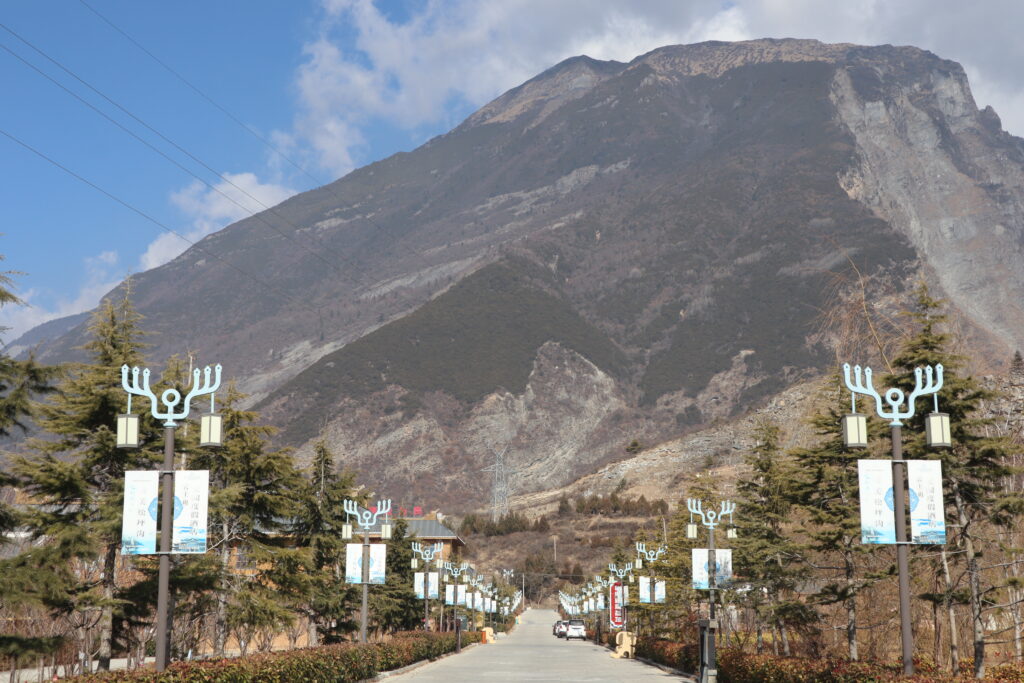
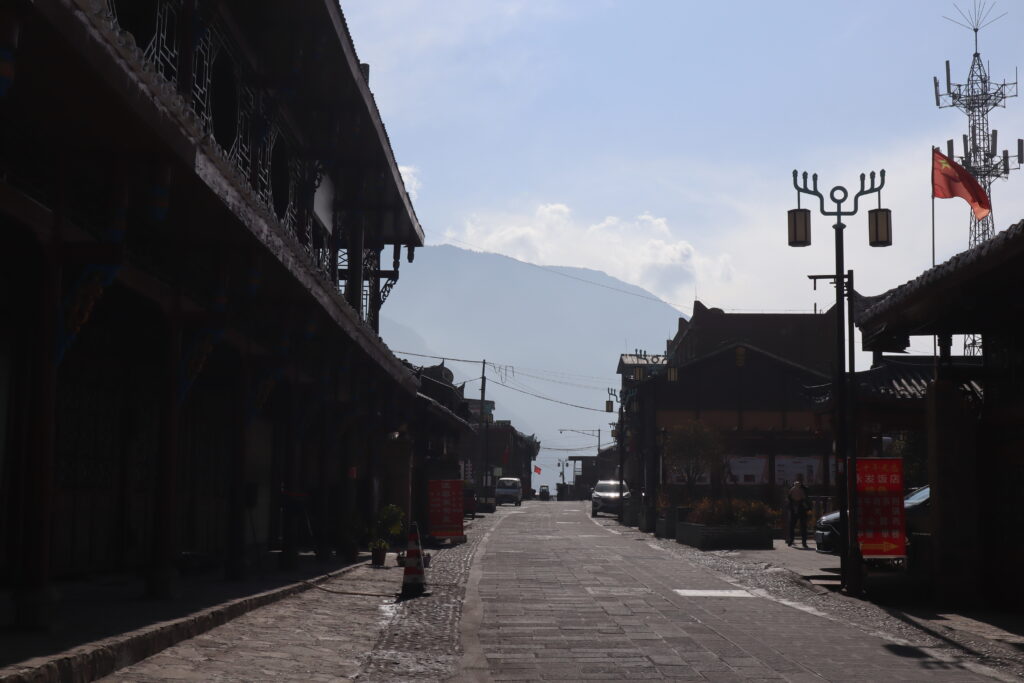
Exploring the different ends of the town it becomes clear that this “upper” Diexi only carries a slight facade of tourism but is like most other rural areas, resilient. It also reveals a historical spirit that pays tribute to some sort of ancient military history. An old soldiers’ barracks sits in the center of the abandoned school, murals of ancient soldiers line a main street, and stone watchtowers can be found if you venture out in the right directions.
These outskirts of the town are almost completely without visitors, which is fine by me. The old watchtowers are an especially interesting reference for me, due to their prevalence throughout the Qiang region and its other villages.
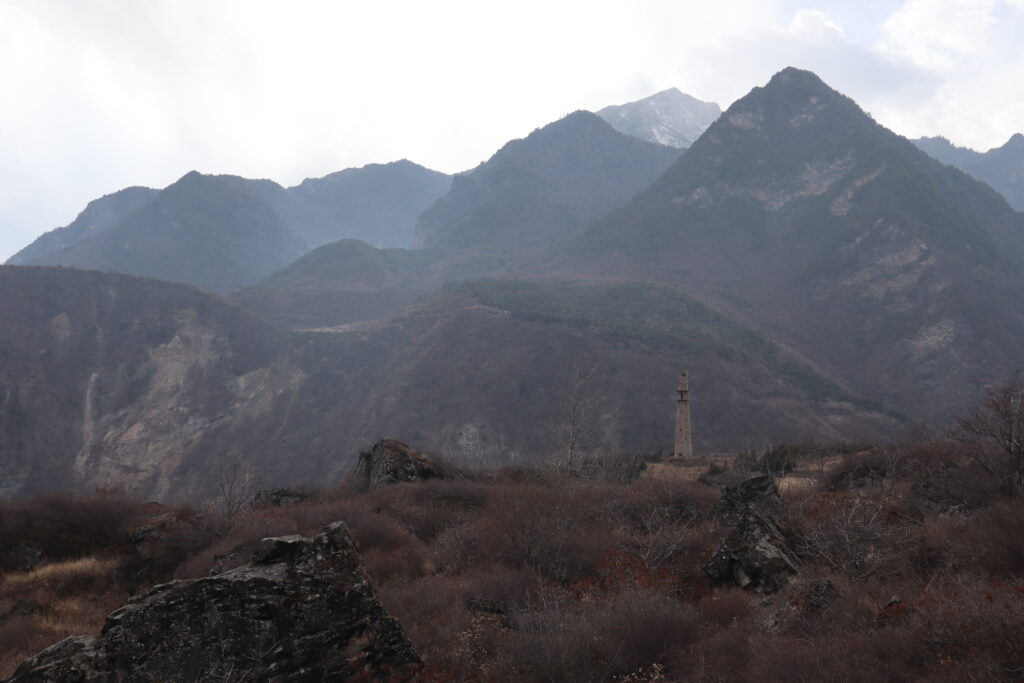
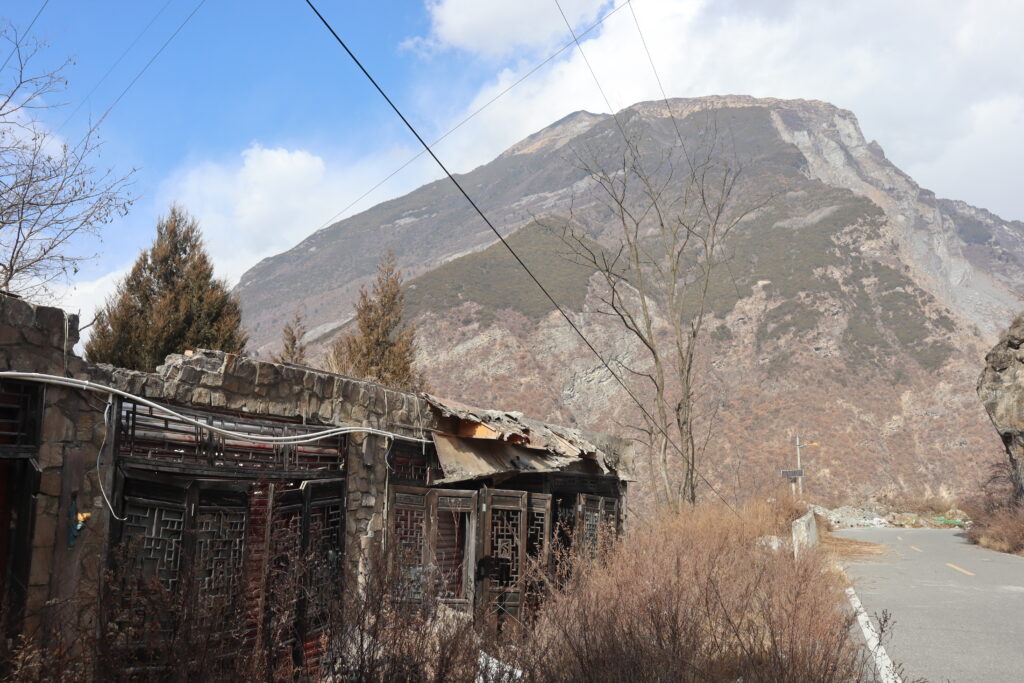
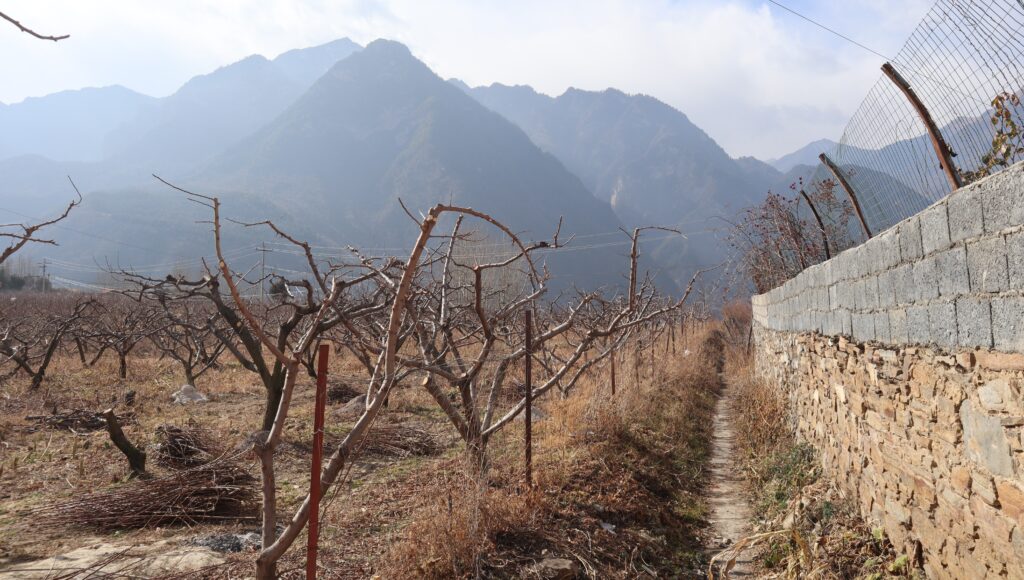
The largest of the watchtowers marks the best viewing spot of the day. It is on the far end of the town (opposite of the entrance) and sits on a rocky hill with a path of its own. I was surprised there was nobody else here. It must be busier during warmer months.
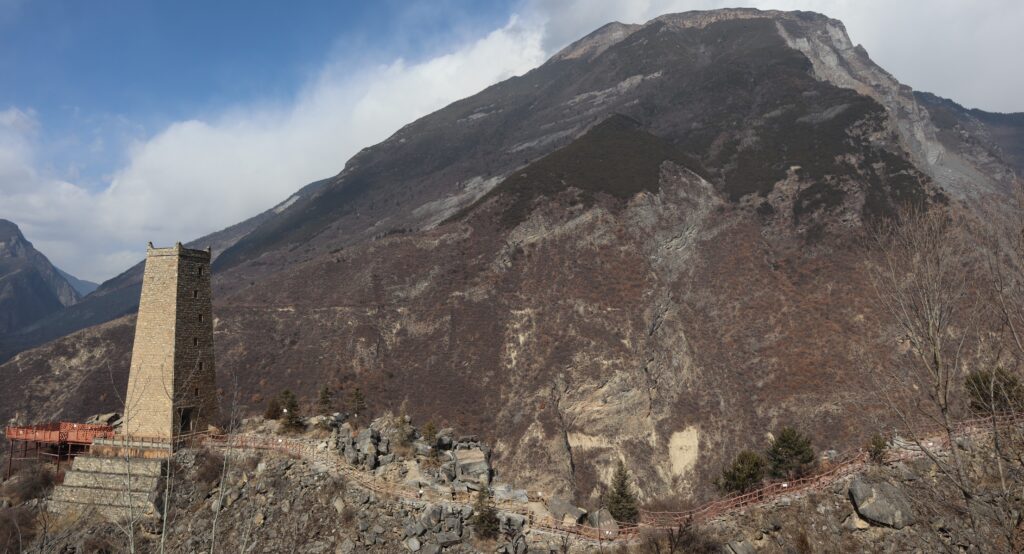
It’s a fun, short trek to the watchtower.
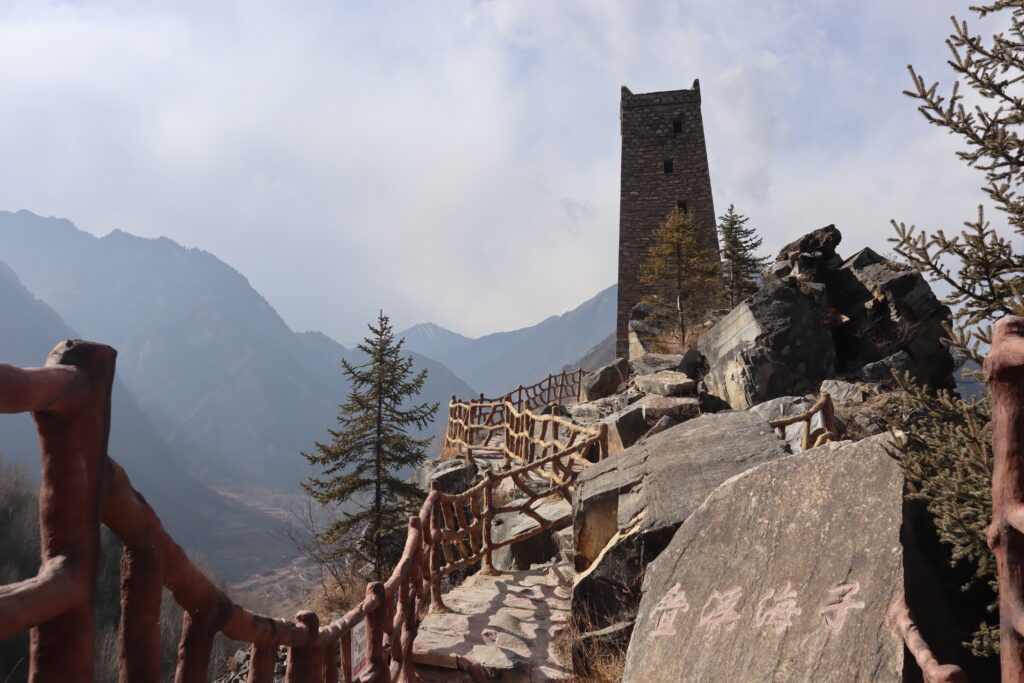
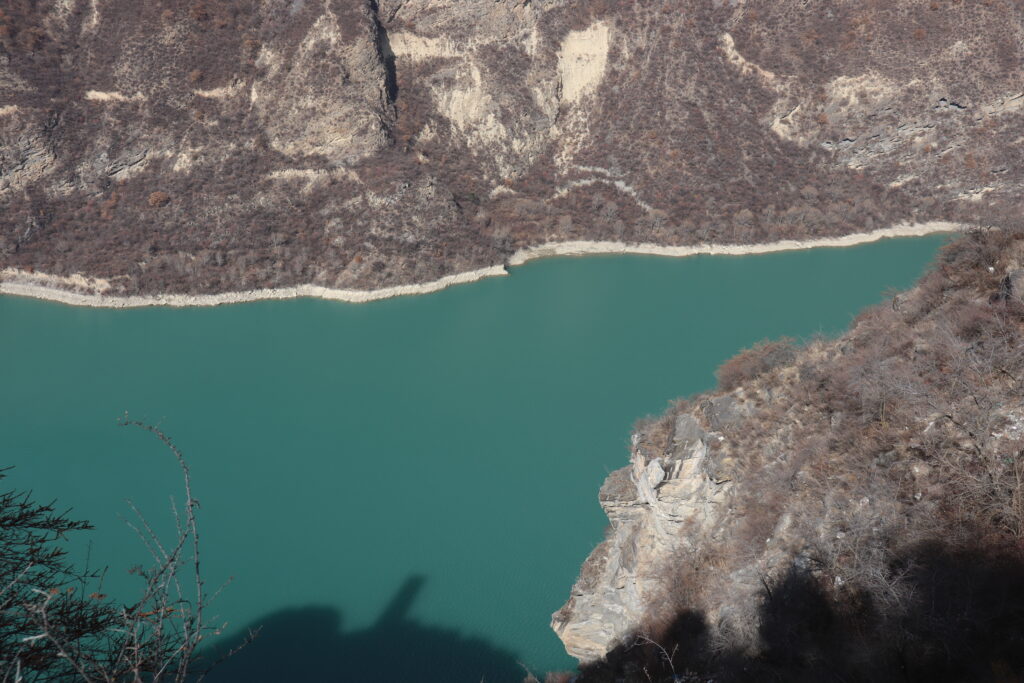

The watchtower offers a complete experience. I can go straight inside and all the way up (about 7 floors). The stairs don’t look terribly sturdy but do the job. The whole tower seems to have a slight lean. Inside, lots of graffiti and scant mysterious decor on the walls. Can you spot the skull? Each floor is smaller than the last. Windows on each level provide better overhead views of what is outside.
At the very top, an open roof offers a full, all-around view, if you are brave. There is only a little space, my fear of heights keeps me from the very edges, and I fail to get a good picture. It is windy and there are no railings up here. But the bit of nausea is worth it.
I am not sure how old the tower is, sadly. I expect it would have been built (or significantly repaired) after 1933 at least, but I could be wrong.
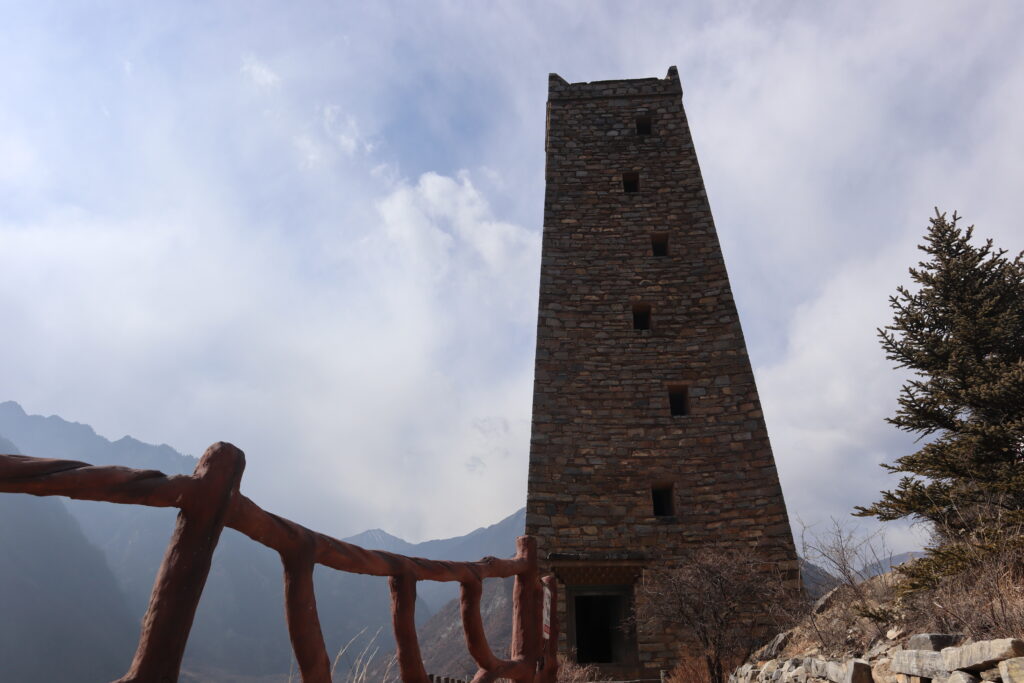
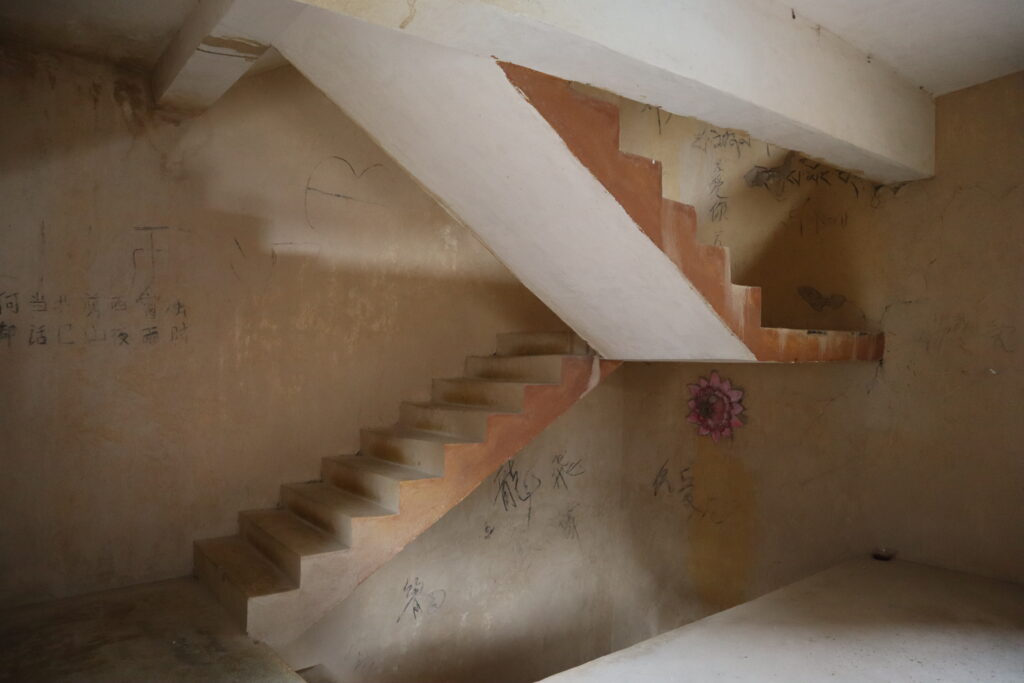
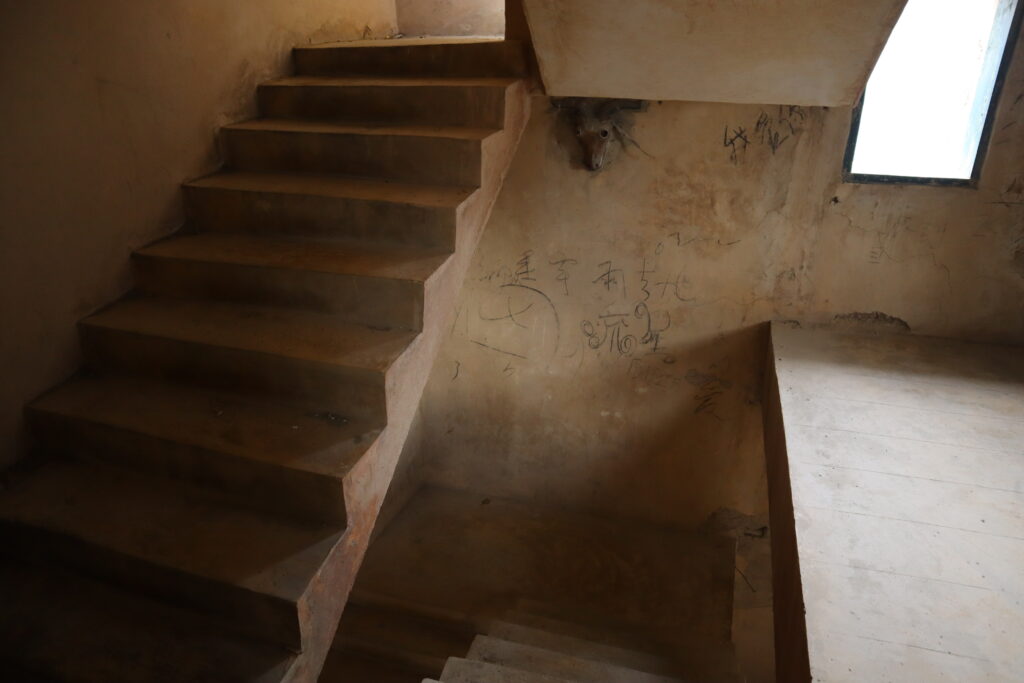
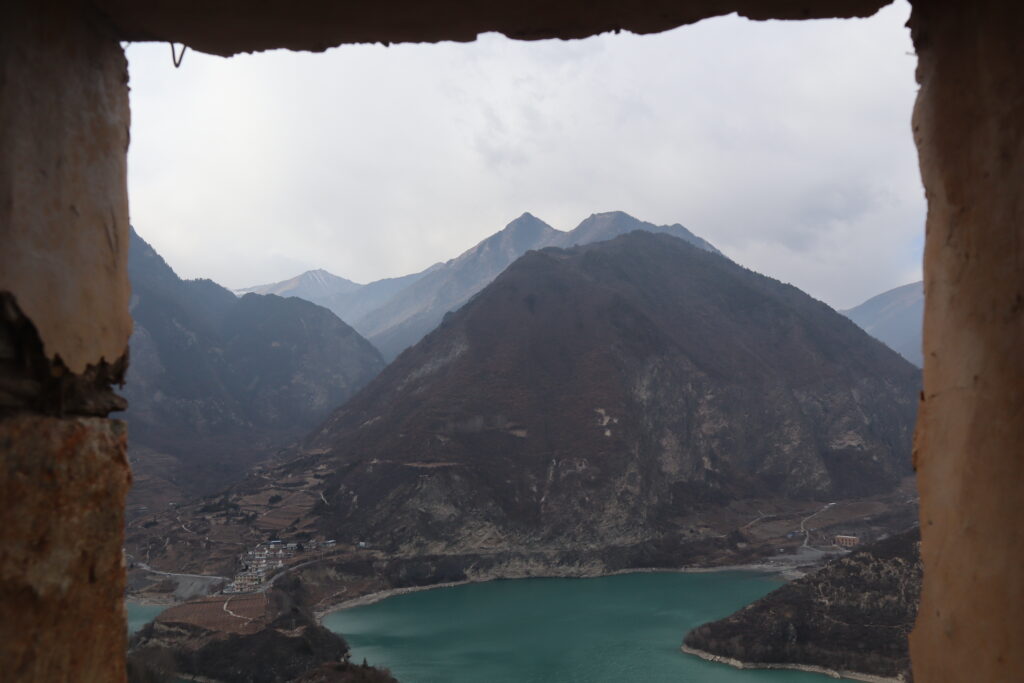
On the other side of the tower is the viewing platform. You can get the best view of the lake here, the surrounding mountains, and some nearby communities. I was very lucky to enjoy fairly clear weather and no other visitors.
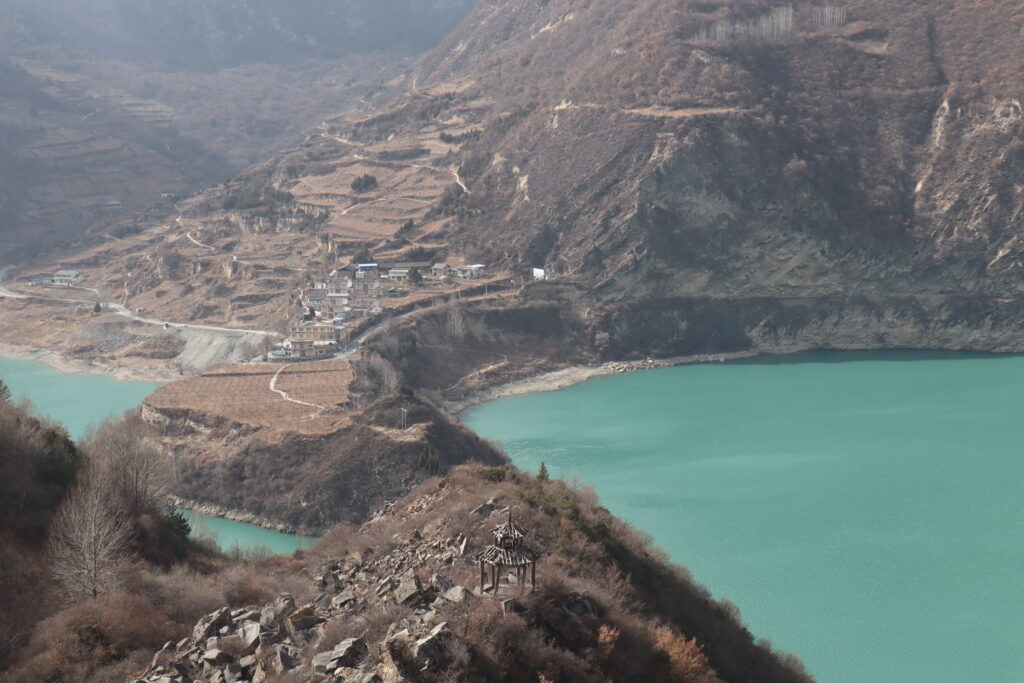
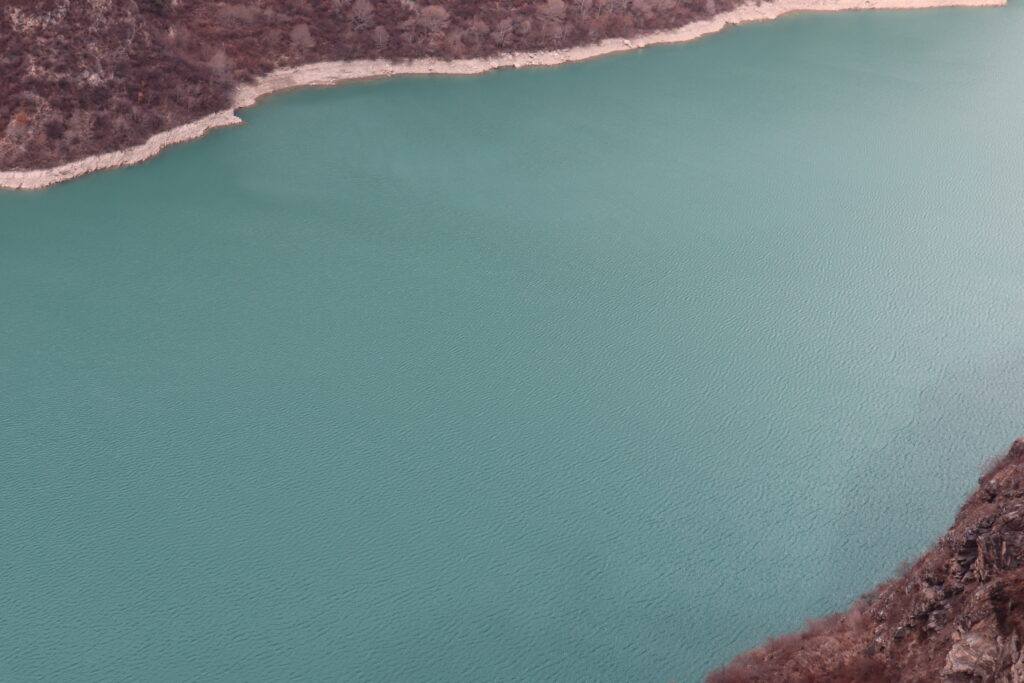
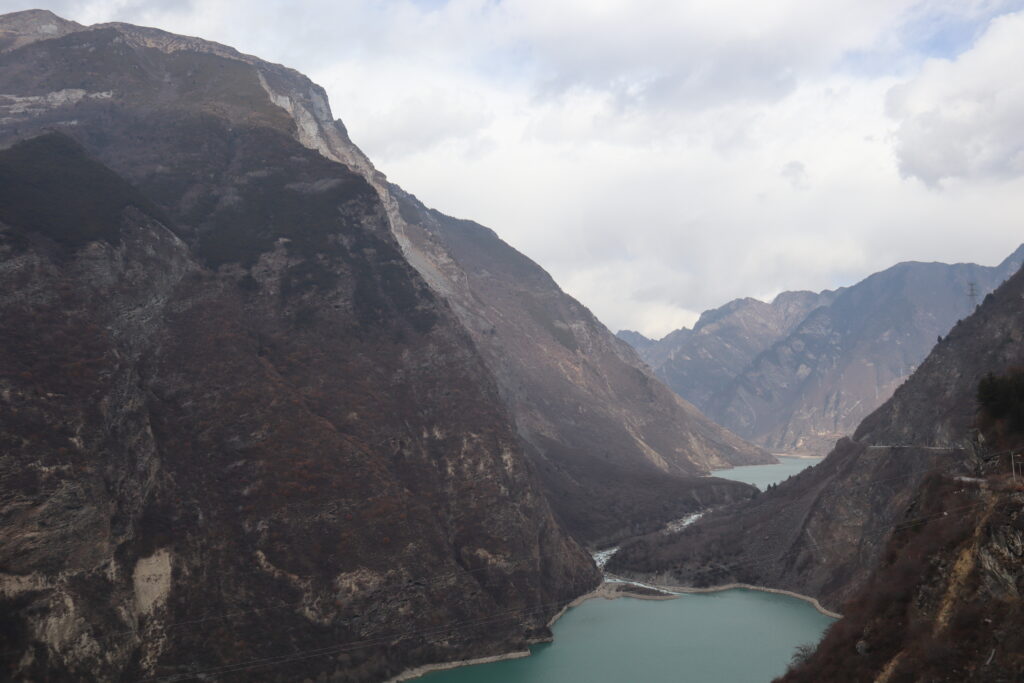

The mountain in the center [of the above photo] is called the “turtle”. The larger body of water running around it, is the most observable section of Diexi Lake that I personally found. I tried to capture multiple perspectives of it. I suspect the color of the water is due to some abundant local mineral in the water, or from the rocks around it. While the lake is quite mesmerizing, I regrettably could not spot any underwater ruins (which supposedly is possible), at least from my location.
But, visiting Diexi was very outstanding. The town and lake embody mystery, age, and the tremendous landscape. All of this place is deeply tied to the Qiang region. It is so worthwhile to travel off the beaten path here, and I hope to explore even further next time. I really think there is more to see here that could be equally captivating, if not more so.
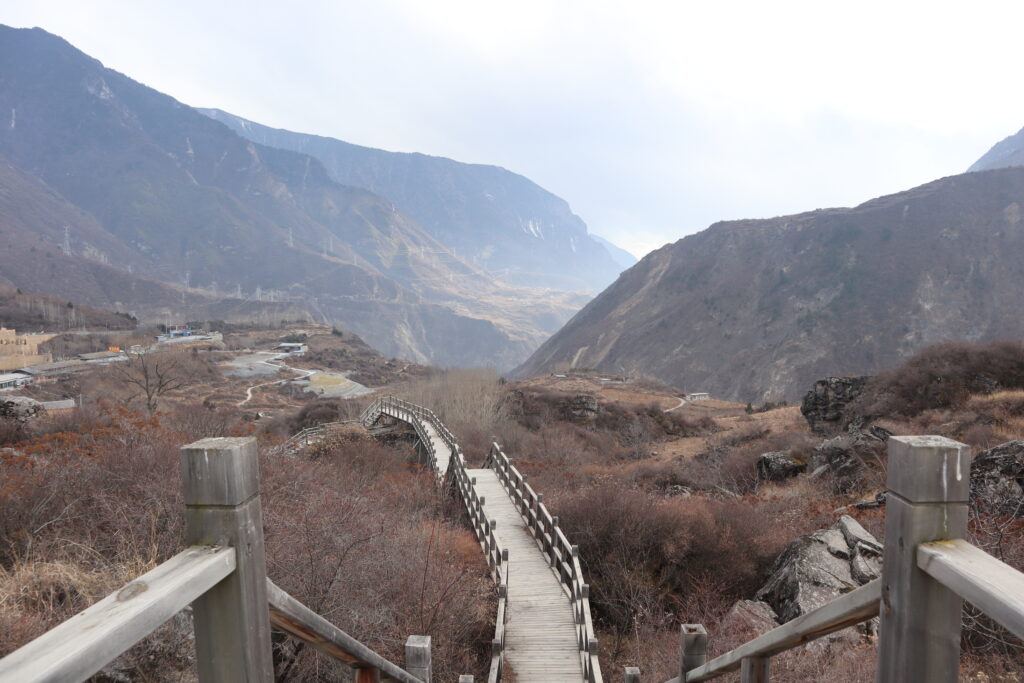
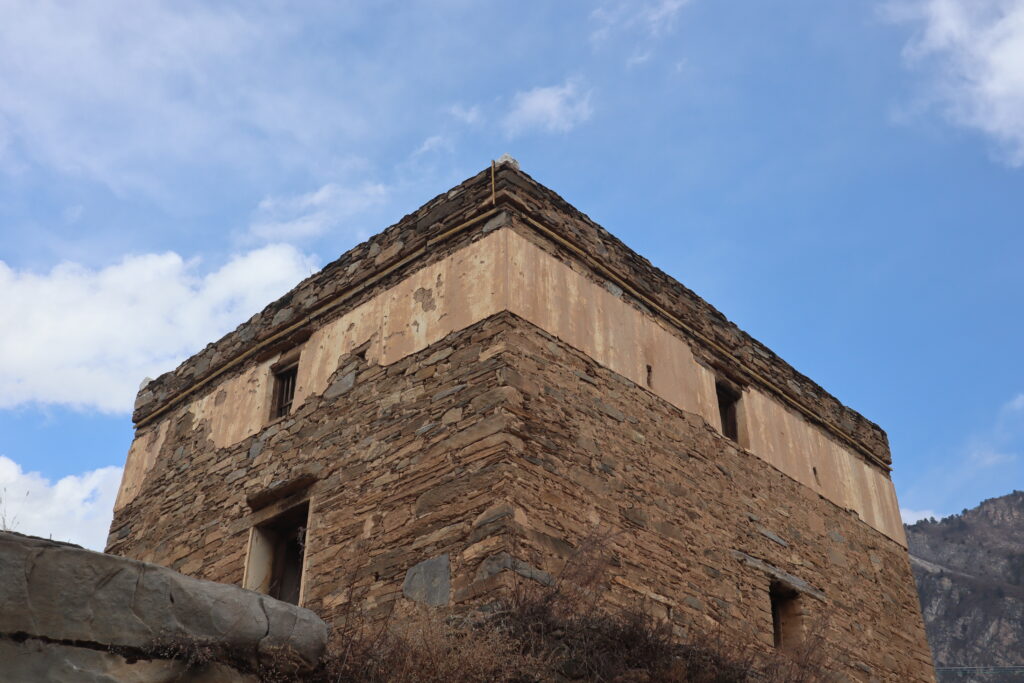
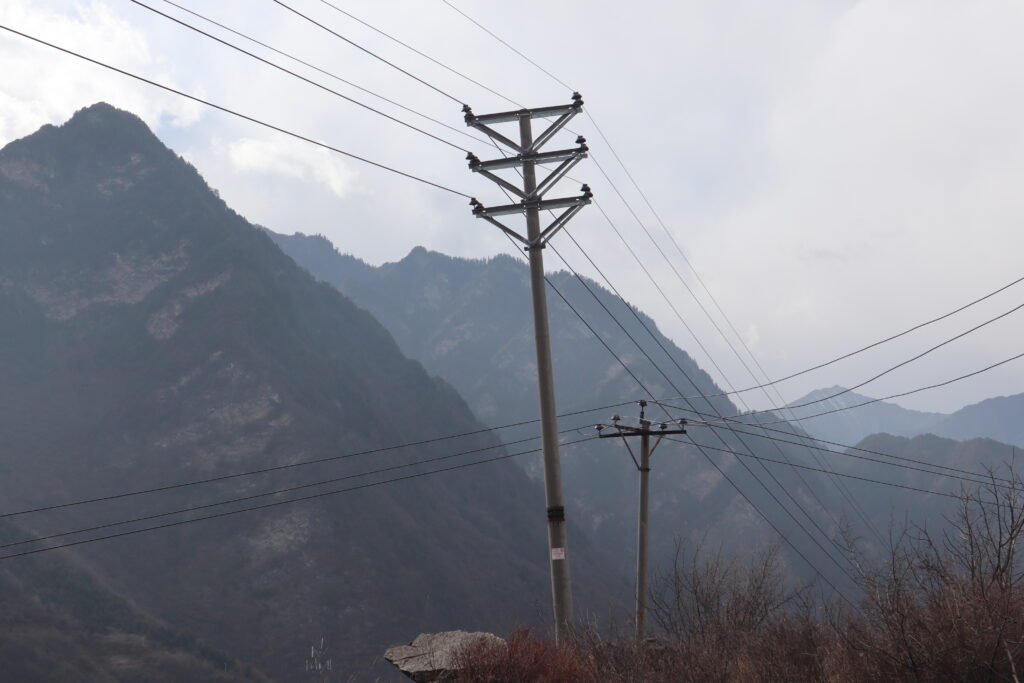
Another aspect of Diexi I intend to investigate further is the current population. The latest I can find is from 2000. I am curious to see if there is an upward or downward trend since then. Information in this piece is primarily from Wikipedia (Diexi, Diexi Lake, 1933 Diexi earthquake), a GIS paper abstract, and personal conversations from my travel. Wikipedia information is sparce and probably not reliable but there are very few resources I am familiar with when navigating in English.


Leave a Reply